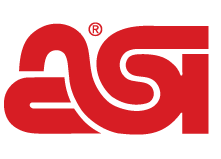Lindsey Reid remembers when her parents, who opened a printing company in the 1990s, would come home from conferences with plastic bags full of swag. “I have very vivid memories of my sister and I in the living room dumping it out like trick-or-treat candy,” she says.
We asked distributors:
“Are you concerned about your clients developing more negative attitudes about using promotional products?”
When she bought her parents’ Eliot, ME-based business in 2020 and rebranded to emblm (asi/181062), she knew she wanted to steer clear of the goodie bag mentality. “We’re creating things that are going to leave a lasting impression. … I’m on LinkedIn all the time, and I’ll see people say that they hate conference swag, and all of the reasons they give, I agree with,” Reid says. “I also hate throwaway swag. I don’t want to create that type of stuff.”
Over the last few years, there’s been a small – but vocal – contingent of people decrying promo products. Some of their complaints? Cheap swag is often made of virgin, likely nonrecyclable plastic, and it’s manufactured overseas and shipped to the U.S. – all of which contribute to climate change. Plus, they say, many of the items given out at shows and events never make it out of the hotel room, landfill-bound rather than packed up to be used and appreciated at home.

“I also hate throwaway swag. I don’t want to create that type of stuff.”Lindsey Reid, emblm (asi/181062)
“The younger generation that’s coming into the corporate world right now is very much concerned with the environment, climate change and overconsumption,” says Tessa DeMuth, strategic account executive at Meridian Promotions (asi/259660) in Loves Park, IL. “There’s a whole TikTok push toward ‘underconsumption core’ and using up what you have before you buy more.”
Such critiques have not gone unheard by the promo industry. In this year’s SOI survey, 31% of distributors said they’re concerned about clients developing negative attitudes toward promo, up from 23% last year. Those concerns are even more pronounced among larger firms, with 39% of distributors with more than $5 million in annual sales expressing worry about anti-swag sentiment among clients. Those worries are being further stoked by tariffs, which have led to client hesitancy and prompted some end-buyers to explore alternatives to promotional products.
But, says Kate Alavez, president of Counselor Top 40 distributor PromoShop (asi/300446), the “pushback against what’s traditionally perceived as promo” doesn’t have to be viewed as a crisis. “I really think this is the SWOT analysis moment,” explains Alavez, a member of the Counselor Power 50 list of the most influential people in the industry. “It’s not a pushback we should take so personally. It’s this brilliant, shiny opportunity to take a moment and lean into what our industry does best.”
One winning strategy is to move away from being an order-taker and instead adopt a consultative approach to selling. “People in our industry are working really hard to define ourselves as more of an agency partner,” Reid says. “We have an eye for creating something that’s truly going to elevate your brand.”
Price Sensitive
For the second year in a row, increasing the size of their customer base and remaining profitable under pressure to cut prices are the two most difficult challenges facing distributors – challenges that continued into the first half of 2025. With ongoing economic uncertainty fueled by ever-changing tariffs, such profit-related worries are a natural byproduct. “Cost pressure is by far my biggest concern – nothing else touches it,” says Mitch Freed, CEO of distributor Genumark (asi/204588). “There’s a lot going on in the world that makes cost pressure extra challenging compared to any given year.”
(Asked June ’25)
Most Difficult Challenge for Distributors
When clients request items that are likely to become “brandfill,” it’s a chance to spark a conversation and share your expertise, says Brenda Speirs, CEO of Bend, OR-based Buzztag (asi/186668). “We’re not salesy or pitchy or anything; we don’t try to push people outside their budget,” she adds. “But we really try to get them to think about not giving one of something to everyone at the conference. Limit your numbers and choose a nicer item, so it’s the same spend, but you’re giving them something they’re going to hang on to and value.”
Don’t discount the power of creativity, says Rob Einhorn, owner of Promotions & Unicorns Too (asi/301189) in North Middletown, NJ. Einhorn, who works mainly with clients in the higher education market, has had many conversations with potential clients hesitant to give out promo. “You want to go bang for your buck? Fine, go to Starbucks and buy $5 gift cards,” he says. “They’re going to remember for 15 minutes at best that they got it from your company.”
On the Rise
The number of orders – and the average value of those orders – was up last year. In fact, order sizes increased 8% in 2024, with midsize distributors experiencing the largest year-over-year growth rate. “We definitely saw order size go up, but gently, not so significantly that you’re completely blown away,” says Kate Alavez, president of Counselor Top 40 distributor PromoShop (asi/300446). “We’re really happy with the progress that we’ve made.”
Median Number of Orders
Total 360
Average Value of Orders
Or, he adds, you can give out lower-impact products made with recycled or recyclable materials, and take extra steps to get creative with the messaging. “Make it better and more impactful,” he says. “Do something with your swag.” Perhaps that means working with a Chamber of Commerce and adding a QR code to conference merch so that attendees get a meal discount from local restaurants within a certain radius, he says, or reach out to the downtown district and ask for a map that can be used as artwork to wrap around a water bottle.
“Being creative is the answer to so many problems,” Einhorn says. “Look at things from a different perspective. Be collaborative. Brainstorm. Don’t go for the same old thing.”
Better to Keep
For the most part, distributors in 2024 weren’t seeing a ton of new faces – with the median number of clients served nearly unchanged last year. On the positive side, however, client retention was better, with distributors keeping almost 80% of their customer base, which increased three percentage points from 2023. Given the economic and tariff-related challenges, distributors will have to be proactive and creative to grow their client base and maintain retention. “We grew almost 30% in the number of clients we worked with, and I truly think a lot of it was due to our rebrand and new website. We’ve redefined ourselves to look as elevated as we feel,” says Lindsey Reid of emblm (asi/181062).
Percentage of Clients Retained
Median Number of Clients Served
Total 78
